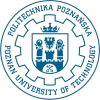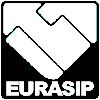Presentation guidelines
Oral Presentation Guidelines
Lecture hall will be equipped with a computer and LCD projector. On the computer (PC) Windows, MS Power Point 2007, and Acrobat Reader 9 will be installed.
The presentations should be downloaded from an USB flash memory before the respective session, so you will have enough time to cope with any possible technical problems.
For each oral presentation, 20 minutes are allocated in the program. The oral presentation consists of 15-16 minutes for presentation of the problem, the background,
the innovative approach, the new results and the comparative evaluation. An additional 3 minutes are available for discussion with the attendees.
The presenter should prepare a reasonable number of slides. Typically, 1 slide is presented in 1 minute or more.
Additional illustrations could be prepared to support possible answers to attendees' questions.
The slides should not be crowded neither by text nor graphics. Too much text should be avoided: illustrations should support the presentation;
they should not be simply read by the presenter. Graphics help in communications, are more understandable, and point out the basic ideas.
Use large fonts so they can be read without a major effort: typically 18-20 point fonts should be used.
Remember that your presentation have to be easily followed also by those sitting in the back of the room.
Presentation should be clearly structured. The basic problem should be clearly stated, as well as the application area.
Background and previous work should be summarized to provide a prospective for the results presented in the paper. The innovative approach should be clearly stated.
The application of the approach to the application problem should be described, by pointing out the main features and characteristics, the problems and the solutions.
The results should be clearly outlined and evaluated. Appropriate comparisons with previous results should be presented.
Conclusions should summarize the work performed and point out the main innovation and results. Future work and developments could also be sketched.
Poster Presentation Guidelines
The poster session areas will be set with poster boards. For your poster you may use 2 poster boards of the size 95 cm x 120 cm (width x height).
The 2 boards will be mounted together side by side, so you may use the area of maximum size 190 cm x 120 cm (width x height).
Scotch tape will be provided on site. Using other methods of poster mounting is prohibited.
The heading should list the paper title, author(s) name(s) and affiliation(s). It should be in bold face type and readable from a distance of at least 3 m.
The font size for the headings of the abstract, introduction, results, conclusions, references, and any other sections, the text and the captions for figures and graphs should be readable from a distance of 2 meters.
The abstract should summarize the pertinent results and conclusions. The introduction should state the purpose of the work in relation to previous work in the field.
The results section should indicate the most important findings. The conclusions should give the interpretation and the significance of the results.
The references to previous work may be appropriate.
While the poster paper does require some text, e.g., in the abstract, conclusion and references sections,
at least one-half of the poster area should be devoted to figures, graphs or photographs.
Authors are encouraged to check their poster's correctness via a trial run with their colleagues at their home institutions rather than seeing it for the first time at the conference.
The poster must be up before the start of the poster session. An author must be present during a whole designated period.
The presenter is responsible for removing his poster to clear the board for the next session. The posters may be removed just after the poster session.
 |  |  |  |  |  |
